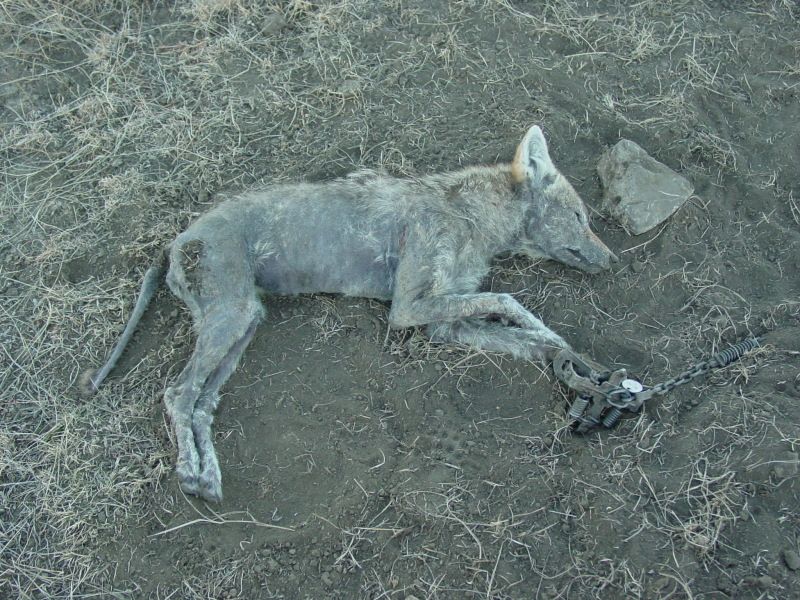|
|
Post by trappincoyotes39 on Jan 25, 2012 20:21:18 GMT -6
Don't know about immune to mange, it is a parasite. It can take years to get to a low satiration point I would say ours was around 10 years but get it at zero? That would be tough in certain areas.
Best way to clean up mange in the north is back to back to back severe hard winters. Once we started having "normal" SD winters the mange started to go down. Furless coyotes can only make it so long in deep snow and severe cold temps that last.
Many ranchers had mangy coyotes sleeping in their sheds/haystacks to get out of the weather, but so weak and so bad off they had little fight left to them. They become carrion dependant at a certain point and become roadkill home bodies. From cover to food and back little free time when it is -20 below.
|
|
|
|
Post by trappnman on Jan 26, 2012 7:40:40 GMT -6
the link on the mange study, seems to, if I read it right state that there might be a genetic link, to resistence to mange
|
|
|
|
Post by trappincoyotes39 on Jan 26, 2012 16:19:31 GMT -6
There might be, but we don;t know that for sure and maybe in the south could have a different outcome than the north where many of them never get to pass on genetic traits due to being dead from mange.... I wouldn't hesitate to say mange will come in go in the same areas in cycles in the north has and will continue to happen and the same areas having the same reoccuring problems.
|
|
|
|
Post by trappincoyotes39 on Jan 26, 2012 16:25:34 GMT -6
This one was caught durring a BMP trap study one of the worst I ever caught notice the puss on it's flank and zero hair condition. He didn't have any fight left and was found DOA, due to his condition.  |
|
|
|
Post by trappnman on Jan 26, 2012 17:31:38 GMT -6
Why are some areas, immune?
I think i've taken lifetime, a total of maybe 10- widely scattered by year and area. and 1 fox- in fact 3 years ago the red and a mangy yote were a "nice" double for me
And why do some areas, have mnge year after year?
is it genetics? populations? I rule out cold weather, becasue there are areas far north of me, that have bad mange, and have for a long time.
in the 25 years I've trapped coyotes, I don't even think of mange- the rare one comes as a shock.
|
|
|
|
Post by trappincoyotes39 on Jan 26, 2012 17:52:32 GMT -6
I wouldn't say immune. I think alot of it has to do with population on a larger scale and also densities of coyotes over a geographic region. Some areas have pockets of high densities but somewhat isolated, others have more coyotes over a broader range of area. These areas would be come infected quicker than an isolated pockets of coyotes seperated by miles and miles as far as densities go.
Again I would like to see more collared studies done on mange in coyotes in different geographic regions would be interesting for sure.
|
|
|
|
Post by trappnman on Jan 26, 2012 19:01:52 GMT -6
another interesting point- was the study had several coyotes that went into remission on mange.
Wileys owed $10,000!
|
|
|
|
Post by trappincoyotes39 on Jan 27, 2012 4:45:24 GMT -6
If anything could survive mange it would be a coyote!
|
|
|
|
Post by milkie62 on Feb 2, 2012 13:33:29 GMT -6
I am only a newbie canine trapper.Only a water trapper from 30 yrs ago.Use to be a fair amount of coyotes in my area.last year caught 6.This year none.No tracks even during hunting season in the snow.I have a road kill deer carcass in the back field with my trail cam on it----only crows after 3 weeks.3 yrs ago would have had up to 5 coyotes on film at same location on a roadkill.A TON of rabbits though this year so it may be a cycle.No fisher either this year.Manyy trappers in certain areas say the same thing.
|
|